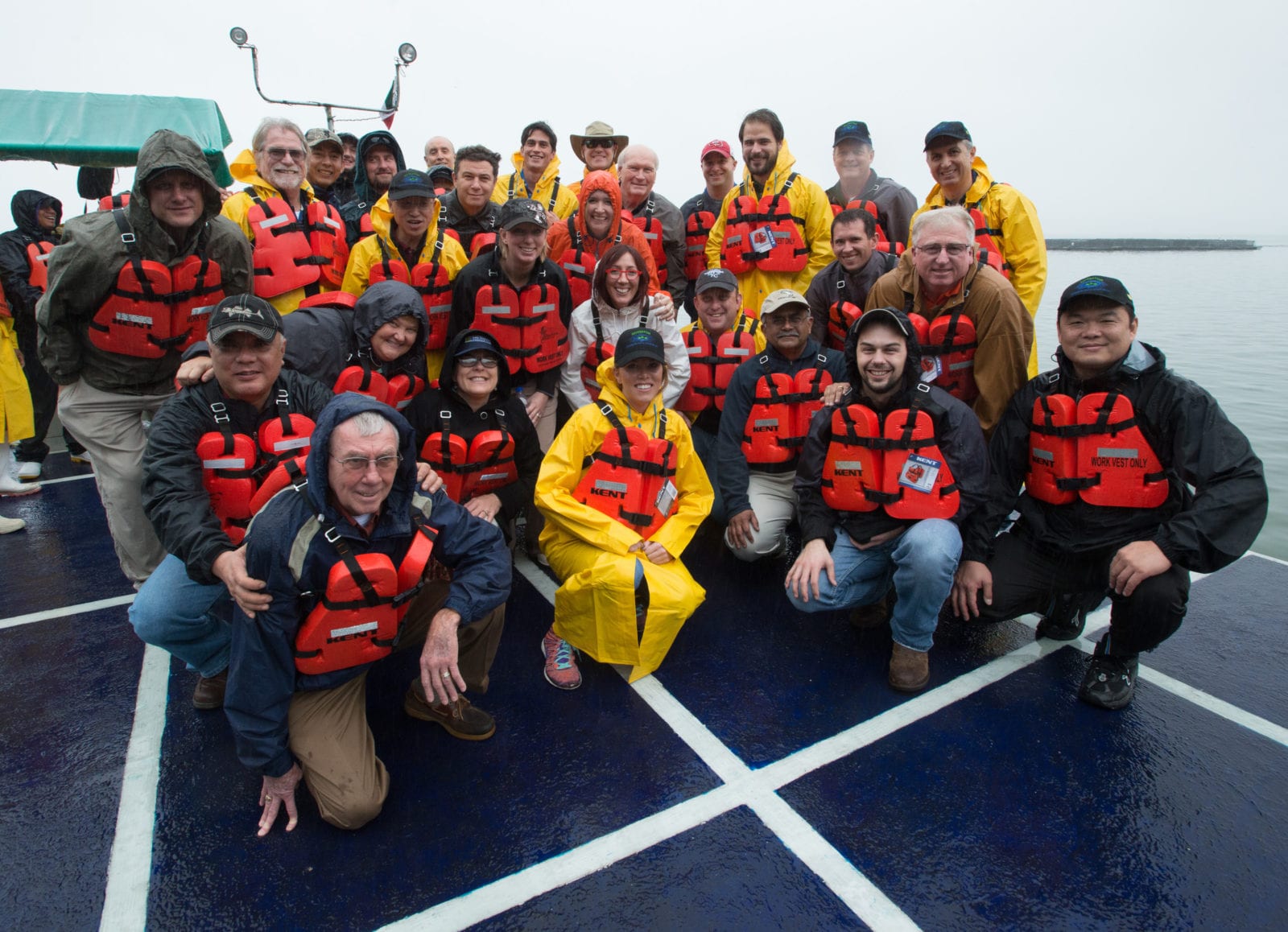USSEC Hosts 2016 U.S. Soy QSSB Aquaculture Educational Opportunity in Mexico
- Category:
- Aquaculture
- General News

About 50 grower leaders, state soybean staff and USSEC employees traveled to Villahermosa, Mexico to learn about existing opportunities and the future expansion of the aquaculture industry at the 2016 U.S. Soy QSSB Aquaculture Educational Opportunity from January 12-14.
A meeting on the first day was dedicated to learning about current aquaculture constraints, opportunities and general happenings in key regions and countries around the world, including the U.S. Participants were provided with an overview of the global aquaculture industry and discussed trends and opportunities, particularly examining Southeast Asia, Latin America, India, Egypt and Turkey, with a summary of the aquaculture feed sector and public relations and certifications. Attendees commented that hearing about ten percent increases each year in some of the aquaculture-producing countries demonstrated a great potential for U.S. Soy.
The second day featured a full-day site visit to Regal Springs’ tilapia hatchery, cages and processing plant.
“We’re here to help show the soybean farmers in the U.S. where their checkoff dollars are being invested, how they are being invested and ultimately where much of their soybean meal ends up,” Colby Sutter, USSEC Marketing Director Aquaculture – Customer Focus, said while leading a site tour. “It’s crucial to be able to see first-hand how relationships have been forged in international marketing programs where ultimately we are creating a preference and demand for U.S. Soy.”
Regal Springs Tilapia is a company that specializes in 100 percent lake-grown fish with farms in southern Mexico, Honduras, Brazil and Indonesia. The fish are raised in deep water lakes in large floating nets that take advantage of water currents to maintain fresh water and give the fish a more natural habitat.
According to Geraldo Martinez, production manager for Regal Springs Tilapia, the company will produce 30,000 pounds of fish out of two lakes in Mexico per year. That equates to 30 million fish weighing about one kilogram each. The secret ingredient to the success of their business is the soybean meal used in the formulated diets of the fish.
“For one kilo of fish we will need 1.95 kilos of feed,” Martinez said. “So if you are talking 30,000 tons of fish, you will need just short of 60,000 tons of feed in a year.”
Martinez said that about 25 to 30 percent of the feed ration was made using soy meal. He cites free trade agreements with the U.S. as an incentive in buying soy grown and crushed in the United States.
The company exports 75 percent of their fish to customers outside of Mexico. Of that, 95 percent of the fish are exported to the U.S. and the other five percent go to European markets. Costco is one of the major retailers in the U.S. that sells the tilapia.
On the third and final day of the mission, attendees heard about current and potential research studies as they pertain to U.S. Soy in aquaculture from several renowned aquaculture researchers.
Growers who participated in USSEC’s aquaculture educational marketing mission witnessed first-hand the direct link between the growing global market for fish and its need for soybean meal-based feed.
Below is a video of the 2016 U.S. Soy QSSB Aquaculture Educational Opportunity, created by Joe Murphy, Member Communications Manager, Iowa Soybean Association.
https://www.youtube.com/watch?v=jC74NUb2SkQ&feature=youtu.be
All photos are courtesy of Joseph L. Murphy/Iowa Soybean Association